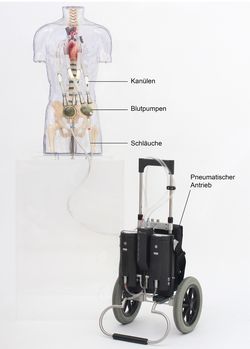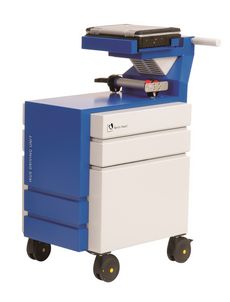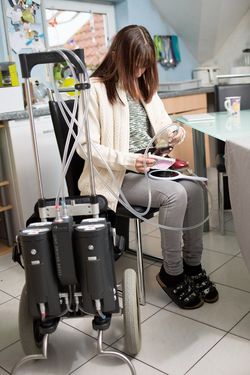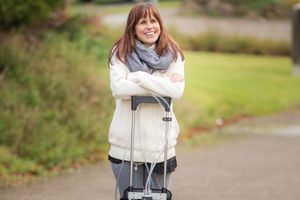Hospitals worldwide use this system for short-, medium- and long-term circulatory support. The heart pump is used, in most cases, to bridge the time until a heart transplantation. Since its first use in 1987, the system has supported more than 1,600 patients.
Functionality
The central element of the EXCOR® ventricular assist device is the blood pump. It consists of a blood chamber and an air chamber, which are separated by a triple-layer membrane. A pneumatic driving unit alternately pumps air, through a tube, into and out of the blood pump's air chamber. As a result, the membrane moves in a pulsating manner. This causes the blood to be pumped through cannulae out of the body, into the blood-carrying side of the pump, and back into the body. Similarly to the heart, the EXCOR® blood pump possesses valves.
These ensure that the blood can flow in only one direction. Here, the pump rate can be adjusted to the individual needs of the patient. In adolescents and adults, the Ikus stationary driving unit can be replaced by the Excor mobil as soon as the patient is stable. With this system, patients are largely able to move freely and can be discharged to their homes.
Implantation
The EXCOR® is implanted using standardized surgical techniques and a cardiopulmonary bypass machine. The CPB machine takes over the circulation and oxygenation of the blood while the EXCOR® cannulae are connected to the heart and blood vessels. After the cannulae have been tunneled through the skin, the surgeon connects the cannulae to the EXCOR® blood pump. The VAD team adjusts the pump rate and the pump pressures via the Ikus stationary driving unit. This ensures an optimal blood pump function. At the same time, the patient is gradually weaned from the CPB machine and the EXCOR® VAD takes over the total pump output.
Hospital stay
After implantation, the patient receives care in the intensive care unit. Experienced ICU physicians and nurses closely examine the patient and conduct lab tests. This is followed by stationary care. Depending on the initial condition, it may take a few weeks for the body to recover. Physicians regularly check the transcutaneous exit site of the cannulae, keep it clean, and place sterile wound dressings in order to promote a fast healing process. The function of the ventricular assist device is continuously monitored. In order to avoid the formation of thrombi, the patient takes anticoagulants from that point on. It is also important to follow a healthy diet. To this end, the hospital team develops an individual diet plan. As soon as the patient's condition becomes stable, the Ikus stationary driving unit can be replaced by Excor mobil if needed.
Note: The therapy descriptions presented here are only illustrative and may vary from patient to patient. If you have questions regarding your individual condition and therapy options, please talk to your treating physician.





